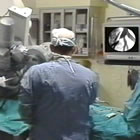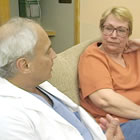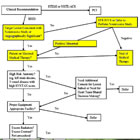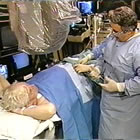 This week started off with me watching a demonstration of fractional flow reserve (FFR) during multivessel PCI. This very instructive case was transmitted live from Hammersmith Hospital in London and featured Dr. Justin E. Davies showing how to perform FFR and, more importantly, how the use of FFR changed the treatment plan for this patient.
This week started off with me watching a demonstration of fractional flow reserve (FFR) during multivessel PCI. This very instructive case was transmitted live from Hammersmith Hospital in London and featured Dr. Justin E. Davies showing how to perform FFR and, more importantly, how the use of FFR changed the treatment plan for this patient.
The angiogram had shown three intermediate blockages (LAD, OM, RCA) and, as such, this patient might have been a candidate for CABG instead of PCI. However, when FFR was used to measure whether or not these blockages were ischemic, two were found to be hemodynamically insignificant: it would be safe to defer stenting and treat them medically. The third lesion in the LAD clearly was the cause of the symptoms and stenting would have benefit for the patient. Continue reading

 The coronary angiogram is often referred to as a road map of the heart. As such, it serves the cardiologist and cardiac surgeon well. It shows where the coronary arteries are, how they intersect, the angles of the branches, etc. There are diagrams of these anatomical features in many textbooks, but the reality is that these characteristics can vary from individual to individual, so it’s necessary to get a road map for each individual in whom an intervention is being contemplated. Then, of course, there’s the issue of narrowings in the coronary arteries. Should these receive stents? Should they be bypassed? Should they be left alone and treated with medical therapy?
The coronary angiogram is often referred to as a road map of the heart. As such, it serves the cardiologist and cardiac surgeon well. It shows where the coronary arteries are, how they intersect, the angles of the branches, etc. There are diagrams of these anatomical features in many textbooks, but the reality is that these characteristics can vary from individual to individual, so it’s necessary to get a road map for each individual in whom an intervention is being contemplated. Then, of course, there’s the issue of narrowings in the coronary arteries. Should these receive stents? Should they be bypassed? Should they be left alone and treated with medical therapy?  Former President George W. Bush received an angioplasty and stent this morning at
Former President George W. Bush received an angioplasty and stent this morning at  I added a new category “tag” to the stent blog today: “
I added a new category “tag” to the stent blog today: “ Partnering with informed patients is a central tenant of the newly released joint
Partnering with informed patients is a central tenant of the newly released joint 



